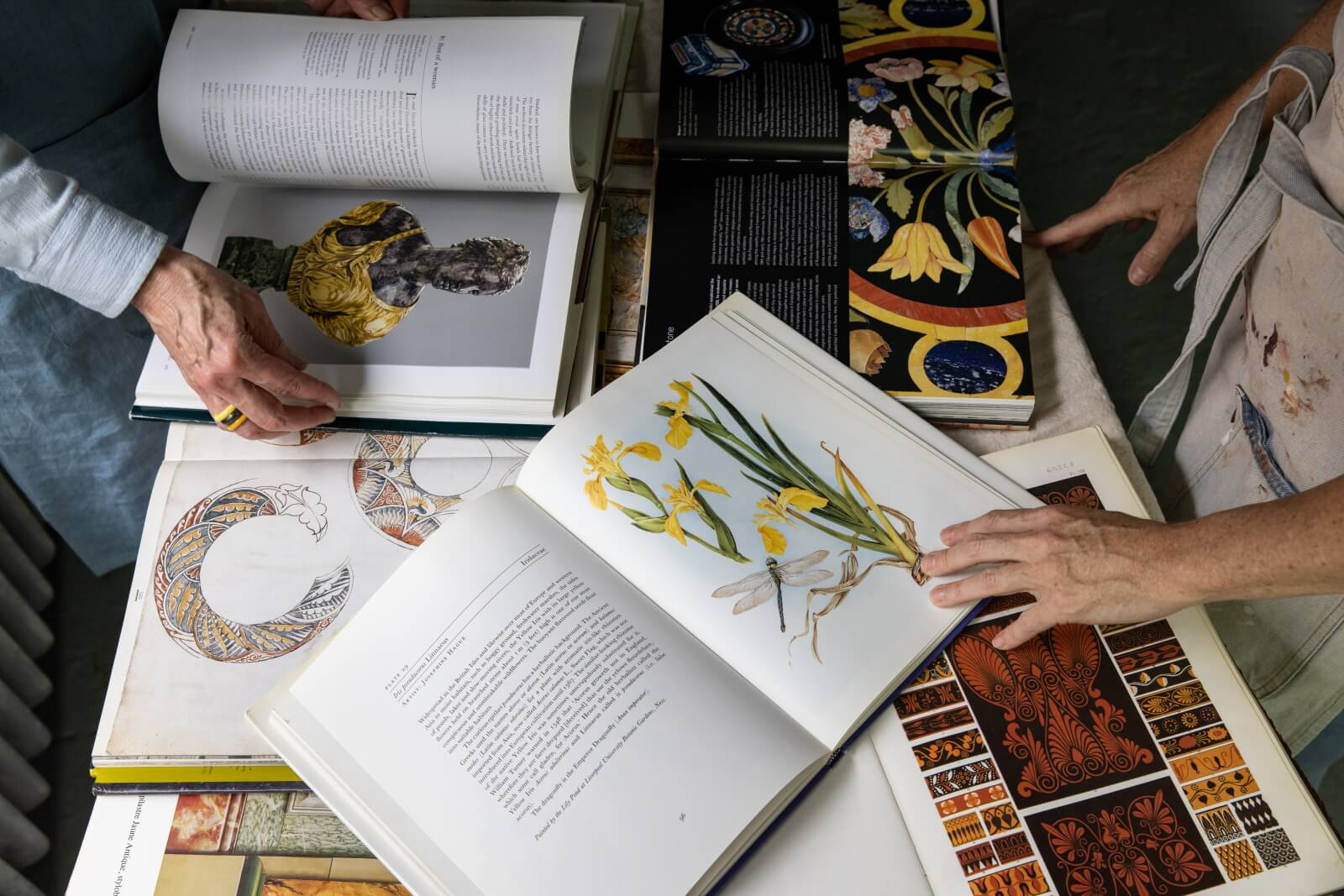Available Classes

Prerequisite: Open to all
Wednesdays, 1:30 PM – 4:30 PM
Begins September 17, 8 sessions
Required for all students, this is the foundational training for all subsequent courses at the Isabel O’Neil Studio. Students learn techniques including surface preparation, paint application, antiquing, waxing, and varnishing on practice boards and execute them on a small piece of furniture, commonly a chair or table.
By the end of the course the apprentice has rendered an expertly-painted piece of furniture, its best features carefully accented, and its surface enhanced with the patina of gentle aging. Most importantly, an awareness of the discipline of craftsmanship and a keen appreciation for detail has been fostered.


Prerequisite: Gilding
Thursdays, 10:00 AM – 1:00 PM
Begins Sept 18, 7 sessions
Students learn to develop a decorative design composition after gaining the understanding of fundamental principles of design including shape, balance, positive-negative space, and color relationships. Students learn to scale and transfer a design and develop a border pattern. Using the palette of Jean-Baptiste Pillement (1728-1808), the artisan learns to shade and practices brush stroke technique. Students complete a painted composition on a panel.

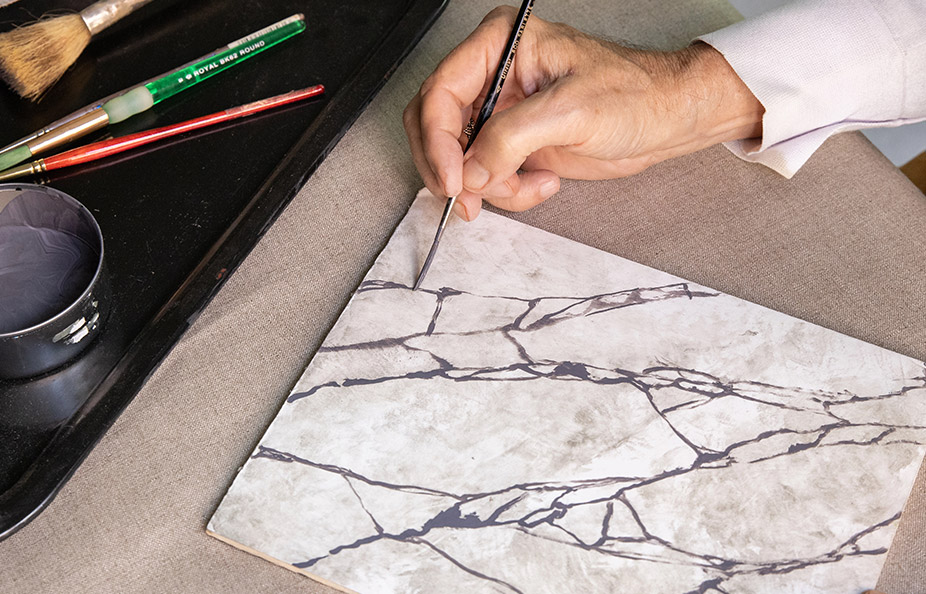
Prerequisite: Design Techniques
Tuesdays, 1:30 PM – 4:30 PM
Begins September 16, 8 sessions
Group II
Students learn the techniques of painting a scumble, wet and dry floats, and veining to achieve an enhanced, flowing, natural impression of several classic and much-admired natural marbles. One project is rendered in a marble finish, and a variety of sample boards are created for the student’s future reference.

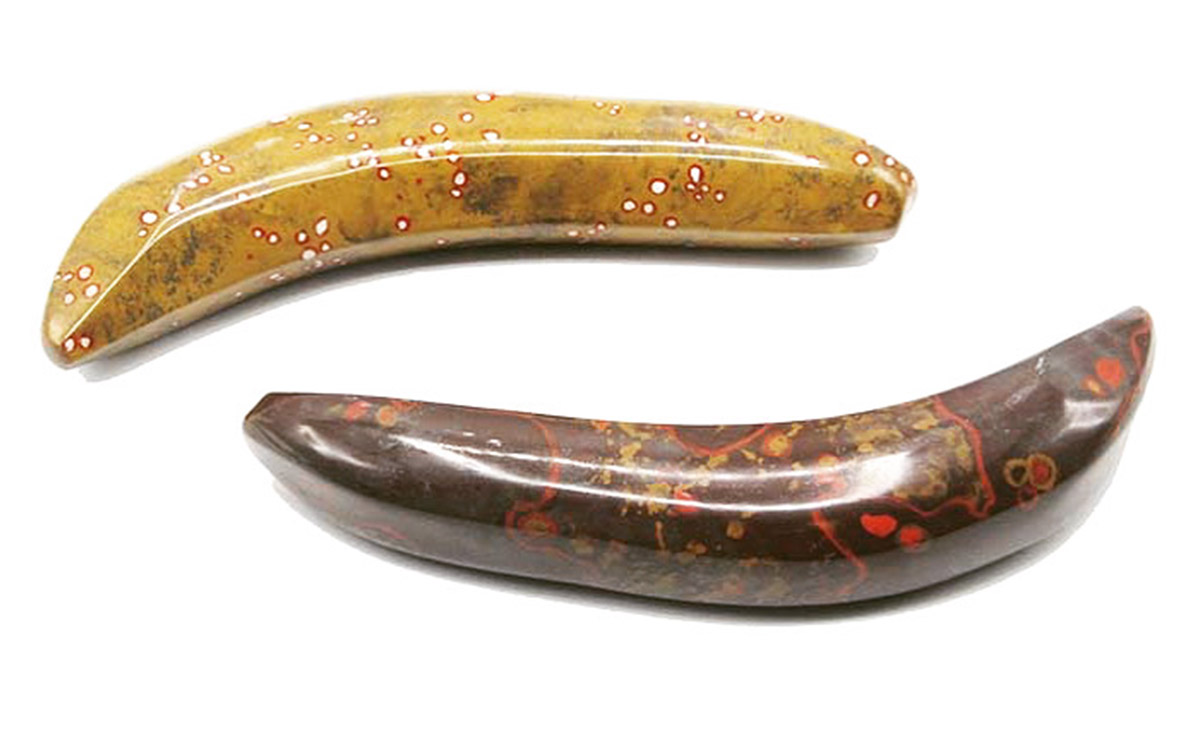
Prerequisite: Gold Techniques
Mondays, 1:30 PM – 4:30 PM
Begins September 15, 10 sessions
Group III
Four objects are rendered in the five mineral finishes: Chinese and Florentine lapis lazuli, yellow poppy jasper, black tigerite, and golden tigerite.

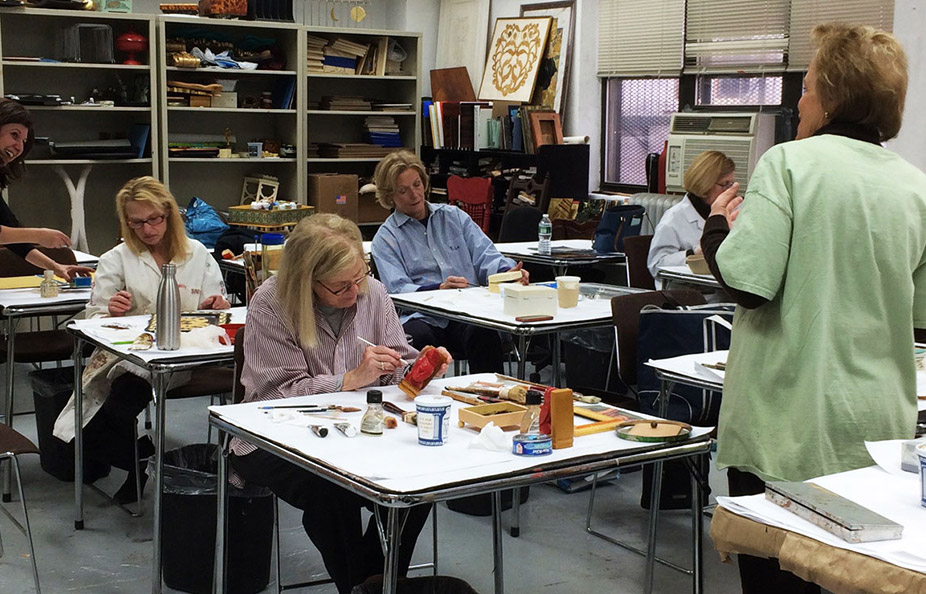
Prerequisite: Gilding
Fridays, 10:00 AM – 1:00 PM
Begins September 19, 5 sessions
Begins October 24, 5 sessions
Finish a piece or begin something new. This is a flexible course. Purchase five sessions which can be used throughout the ten session term. No need to attend consecutive weeks.


Open to all
Wednesdays, 10:00 AM – 1:00 PM
September 24, October 1 & 8, 3 sessions
Using water-based interference paints, students learn blending and application techniques that yield the subtle color shifts in Tiffany’s Favrile glass. Decorative floral motifs from this specific period of art glass are also developed.

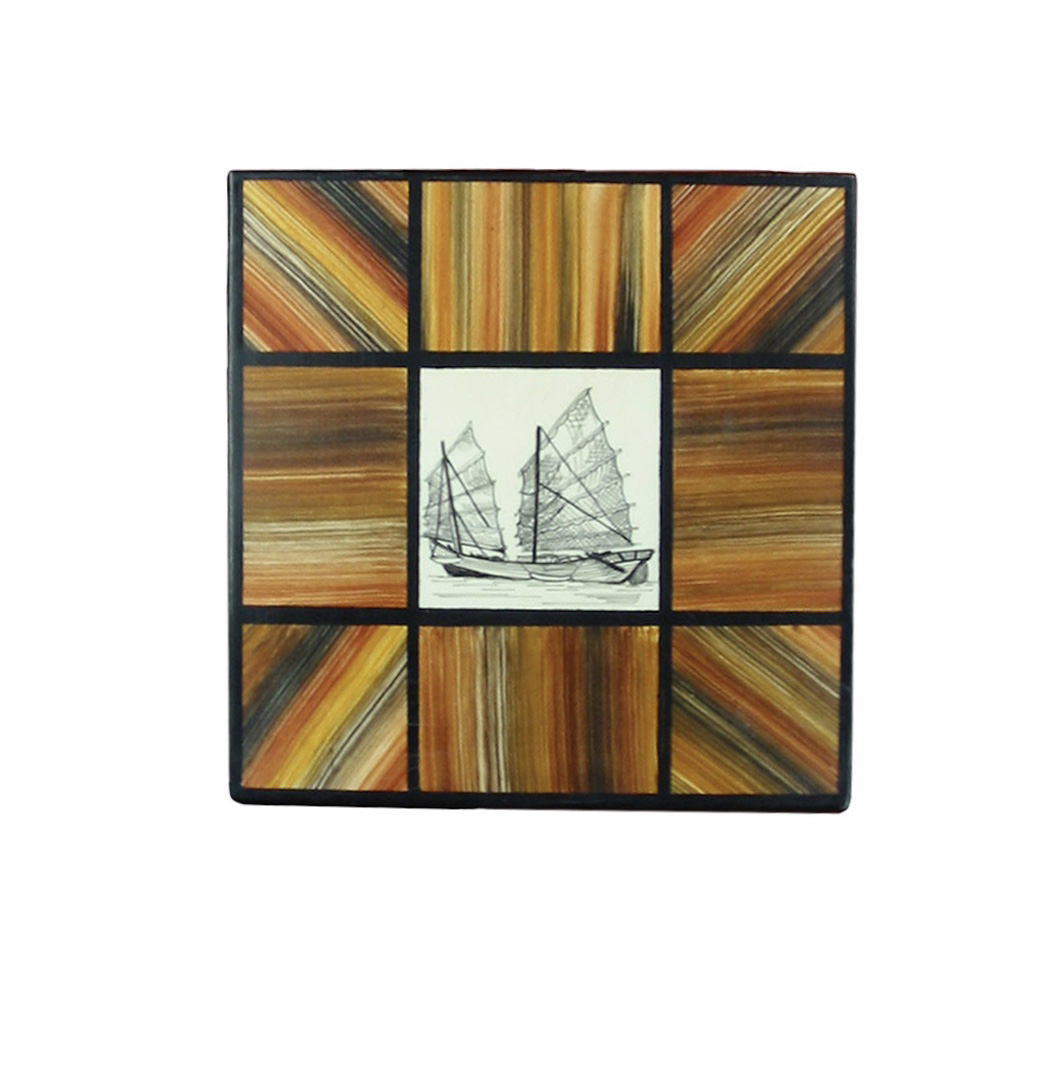
Prerequisite: Basic
Tuesdays, 10:00 AM – 1:00 PM
October 7 & 14, 2 sessions
Using simple tools & materials, create a series of thin, parallel plates imitating baleen, the upper jaw of a whale. A segmented design will be executed on a flat, small piece

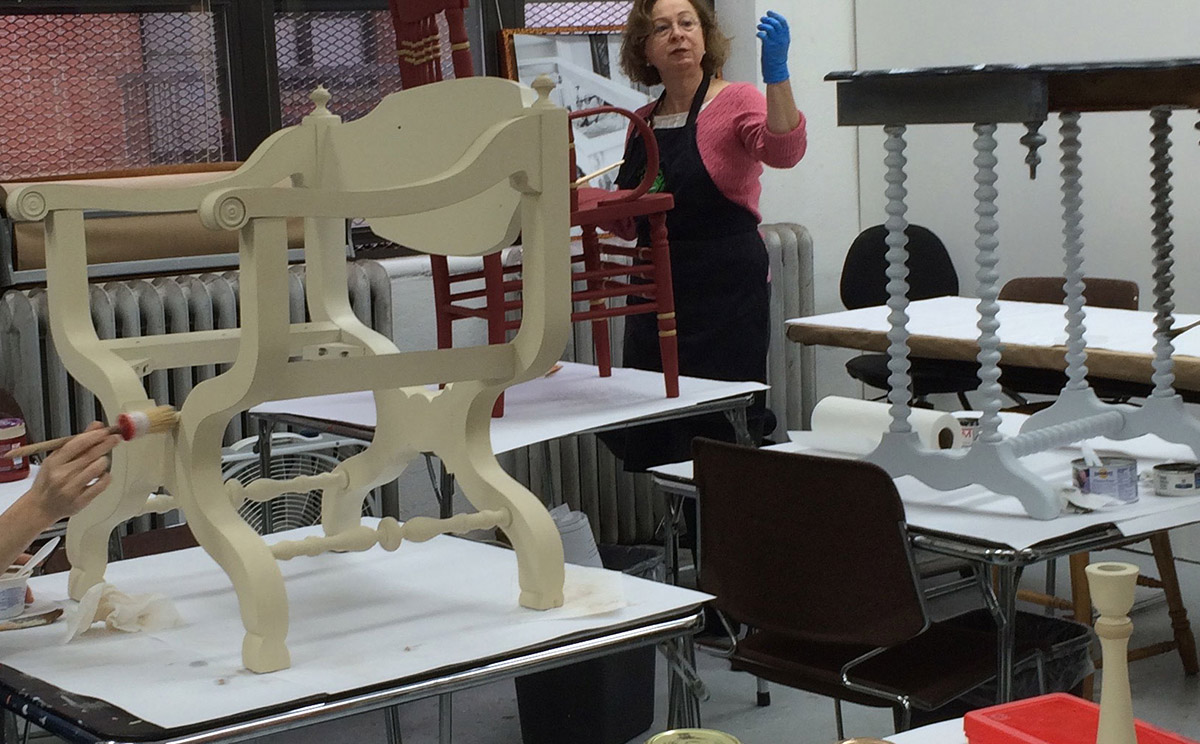
Mondays, 10:00 AM – 1:00 PM
Begins September 24
A 3–hour period to work on class projects or additional pieces.
Paint room materials included.
Tuition: $25.00 per session
Purchase 4 sessions to be used throughout the 10–week term.

Class Catalog
at The Isabel O’Neil Studio Workshop

Learn the fundamental painting techniques in 2 weeks!
This course is required for all students. It is the foundational training for all subsequent courses at the Isabel O’Neil Studio. Students learn techniques including surface preparation, paint application, antiquing, waxing, and varnishing on practice boards and execute them on a small piece of furniture, commonly a chair or table.
By the end of the course the apprentice has rendered an expertly-painted piece of furniture, its best features carefully accented, and its surface enhanced with the patina of gentle aging. Most importantly, an awareness of the discipline of craftsmanship and a keen appreciation for detail has been fostered.


Required for all students, this is the foundational training for all subsequent courses at the Isabel O’Neil Studio. Students learn techniques including surface preparation, paint application, antiquing, waxing, and varnishing on practice boards and execute them on a small piece of furniture, commonly a chair or table.
By the end of the course the apprentice has rendered an expertly-painted piece of furniture, its best features carefully accented, and its surface enhanced with the patina of gentle aging. Most importantly, an awareness of the discipline of craftsmanship and a keen appreciation for detail has been fostered.

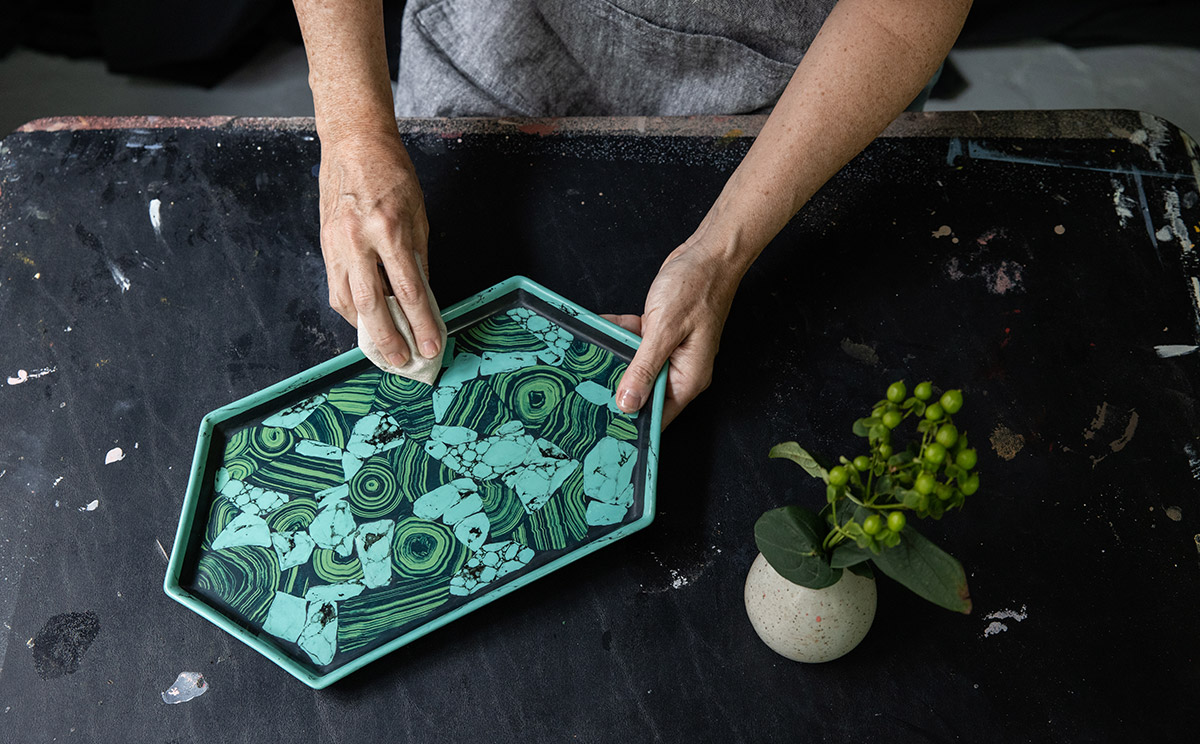
Students learn the characteristics of both water and oil-based finishes. Wet sanding and polishing techniques are demonstrated and practiced so the artisans gain confidence in finishing their work with the appropriate level of protection and polish for matte, satin, and gloss finishes.


Color theory and paint mixing using Japan pigments are explored. Students paint reference charts demonstrating chromatic intensity, tonal value, color wheel relationships, and explore a wide range of neutral hues with subtle tints. Students practice pigment mixing and gain confidence in matching or creating their own custom paint colors.

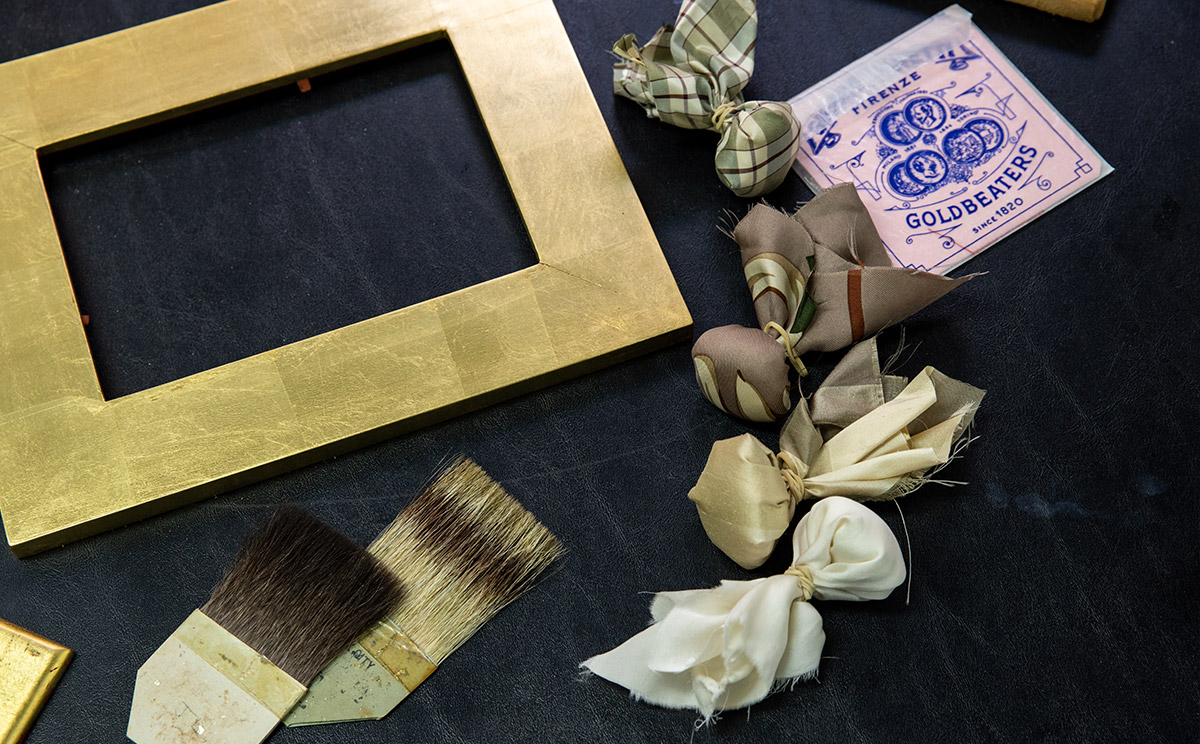
Students learn surface preparation for matte gilding and receive an introduction to gilders’ tools and techniques for laying leaf on both flat and carved surfaces. A variety of patinations are explored. Students complete a flat frame, two carved objects of their choice, and a board that is required for the Design Techniques class. Students utilize precious metal leaf, aluminum, and Dutch metal.


Students learn to develop a decorative design composition after gaining the understanding of fundamental principles of design including shape, balance, positive-negative space, and color relationships. Students learn to scale and transfer a design and develop a border pattern. Using the palette of Jean-Baptiste Pillement (1728-1808), the artisan learns to shade and practices brush stroke technique. Students complete a painted composition on a panel.

After completing Basic, Gilding, Varnish & Polish, Design Techniques, and Color the student proceeds to the groups of courses listed below. Within each group the classes may be taken in any order. Each group must be completed before beginning the next group.
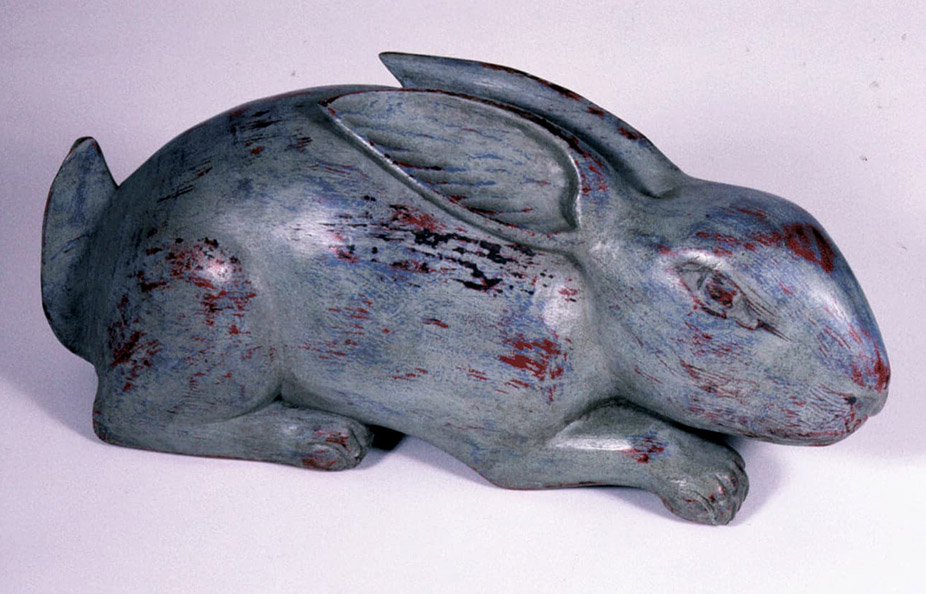
Group I
During this course, students are instructed on a range of physical and surface finish distressing techniques that give the impression of age and use. Students complete a small piece of furniture, applying their own unique design, and finish with an antique patina and wax.


Group I
Students learn a variety of glaze applications and manipulation techniques, including enriching opaque base colors to create the illusion of depth with translucent overglazes. Students create a unique and appropriate design on a small piece of their choice.


Group II
Students learn the techniques of painting a scumble, wet and dry floats, and veining to achieve an enhanced, flowing, natural impression of several classic and much-admired natural marbles. One project is rendered in a marble finish, and a variety of sample boards are created for the student’s future reference.

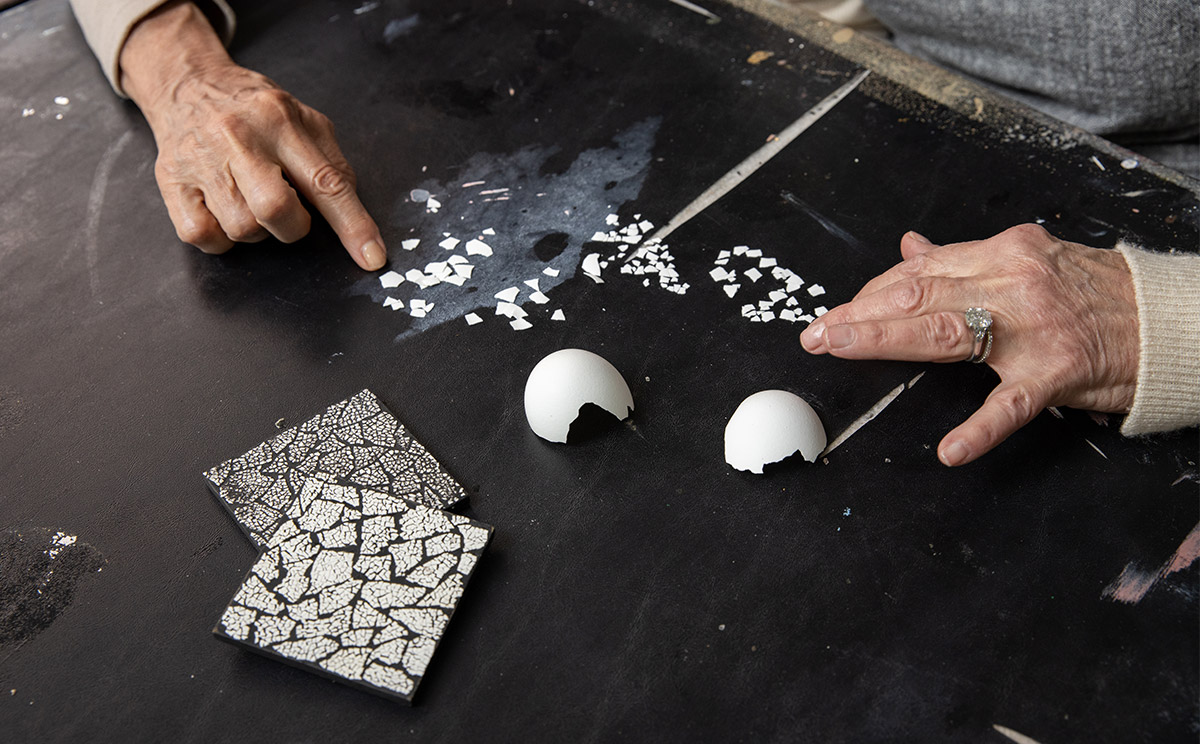
Group II
During this course, students render four small pieces: one with a European lacquer achieved through multiple glazes and a decorative pattern on its surface; an eggshell inlay to approximate a micro-mosaic with a satin-smooth finish; a 14th Century-style Negoro Nuri with a revealed black base under a worn deep red or golden lacquer; and a faux ivory objet d’art approximating a rare treasure.

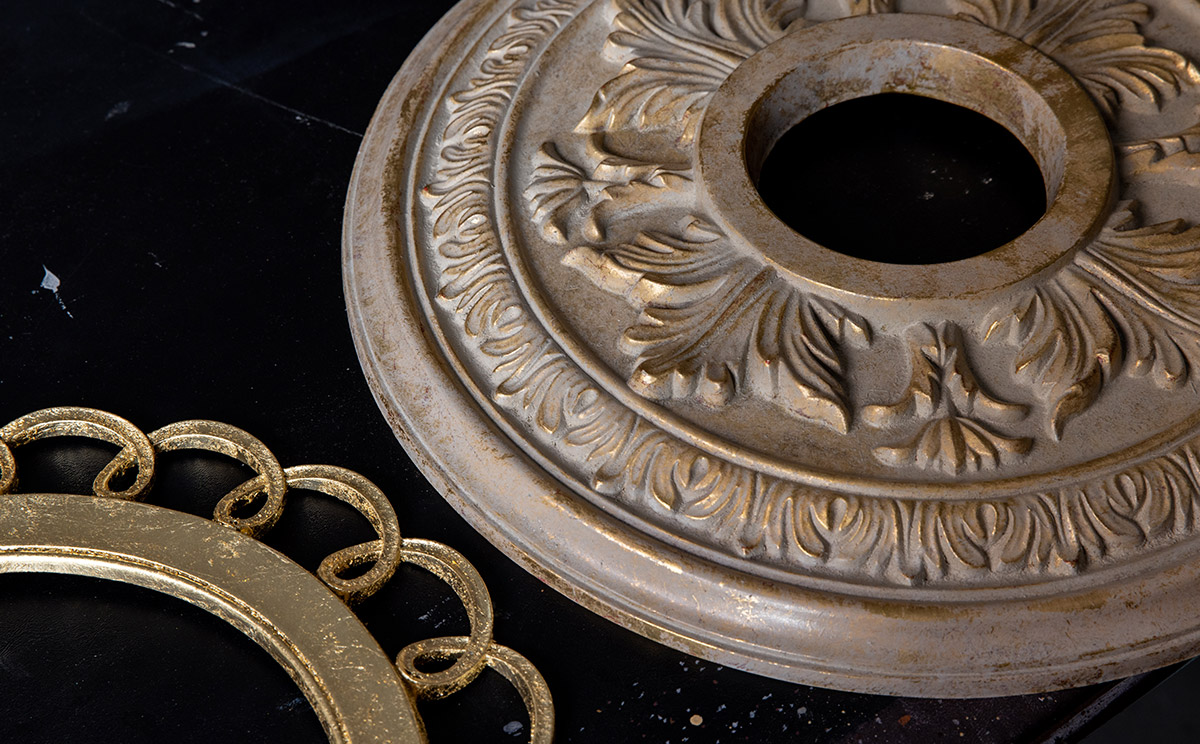
Group II
Students apply their sophisticated understanding of color and design to a casein gesso-like base to emulate 18th Century Venetian and Florentine furniture. A piece of furniture is finished with an appropriately decorative design. An additional gilded and carved piece is gracefully aged with a bloom of dusty casein to finish.

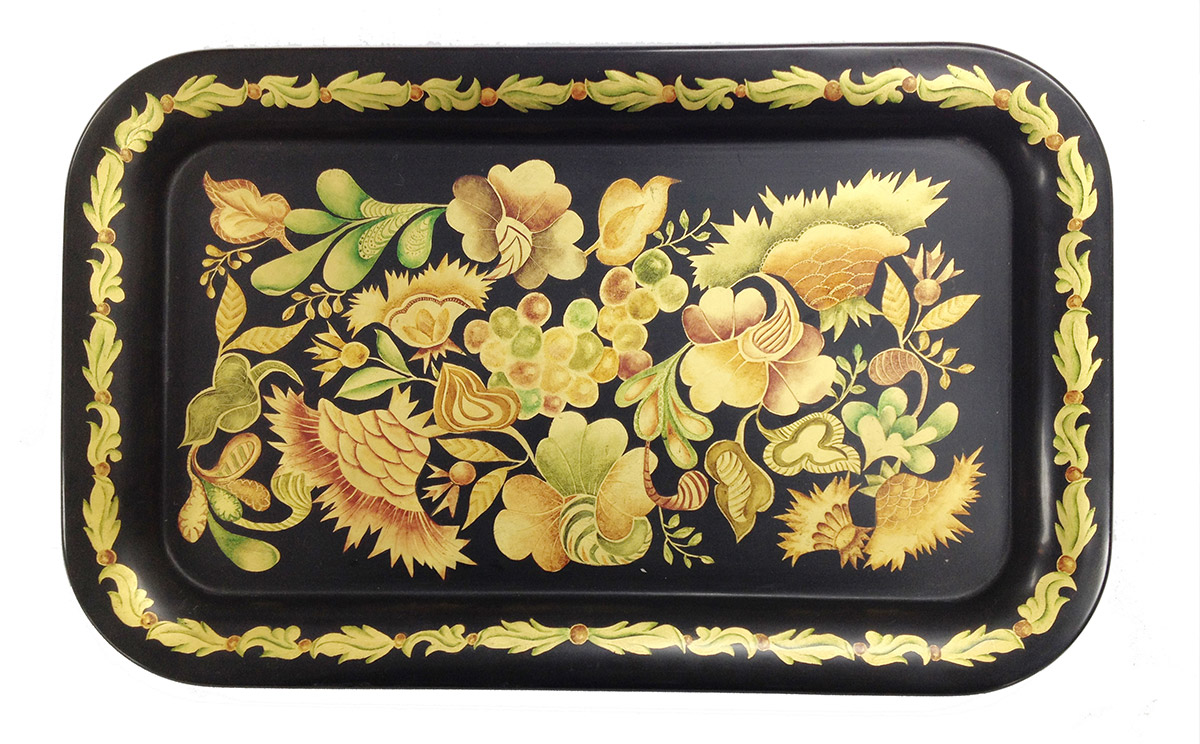
Group II
Students finish two decorative trays in this class. The motif rendered in “Poor Man’s Gold” is shaded in a range of ochre Japan Colors. A more elaborate design is executed in 22k gold and shaded with artist oils to achieve depth and detail.


Group III
Four objects are rendered in the five mineral finishes: Chinese and Florentine lapis lazuli, yellow poppy jasper, black tigerite, and golden tigerite.

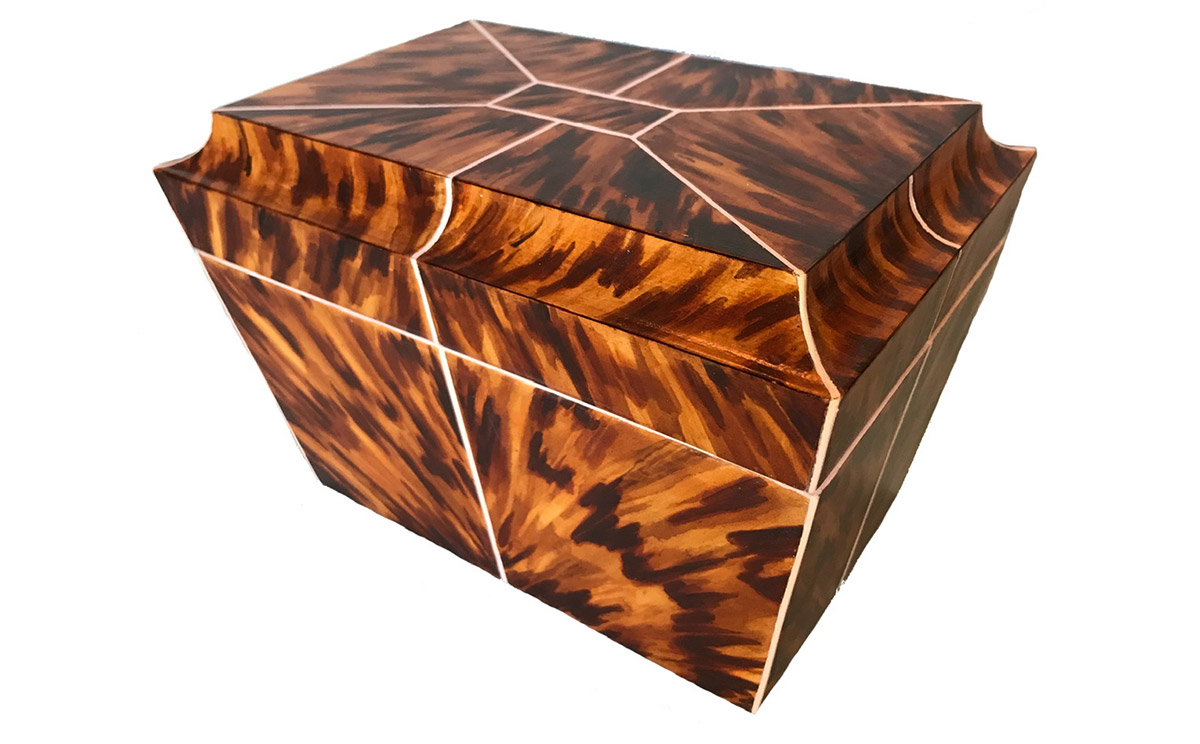
Group III
Two objects are finished in the panel inlay technique typical of the tortoise motif. Two colorations are taught: tawny and amber tortoise. Techniques for creating the impression of ivory and pewter stringing finish out this course in fantasy finishes.

To enroll in advanced courses, students must successfully complete Journeyman courses or be given teacher approval to advance.
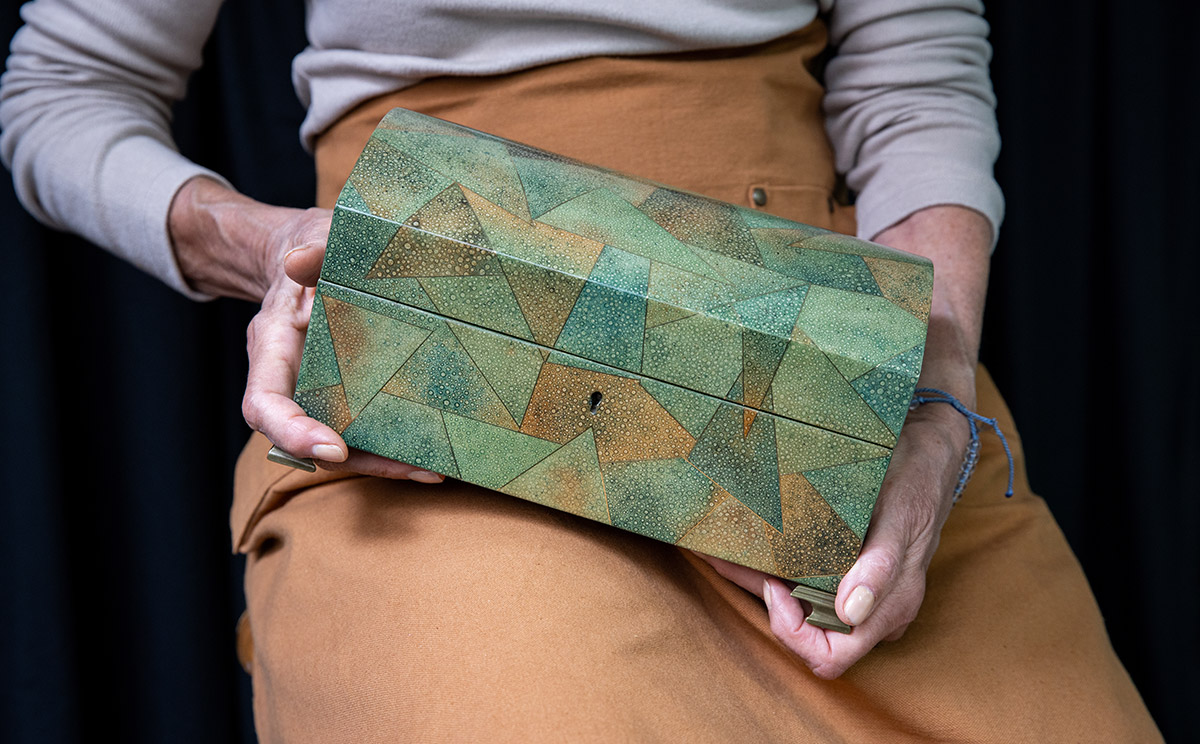
Textured materials and glazes are used to render an imitation of shark skin.


This class looks at the fantasy techniques of Argent D’Ore and Renaissance tortoise. An imitation of the tortoise inlay work of the master cabinet maker André-Charles Boulle is taught. He created brilliant effects by layering the transparent tortoise shell over red-purple and blue-green stained woods.

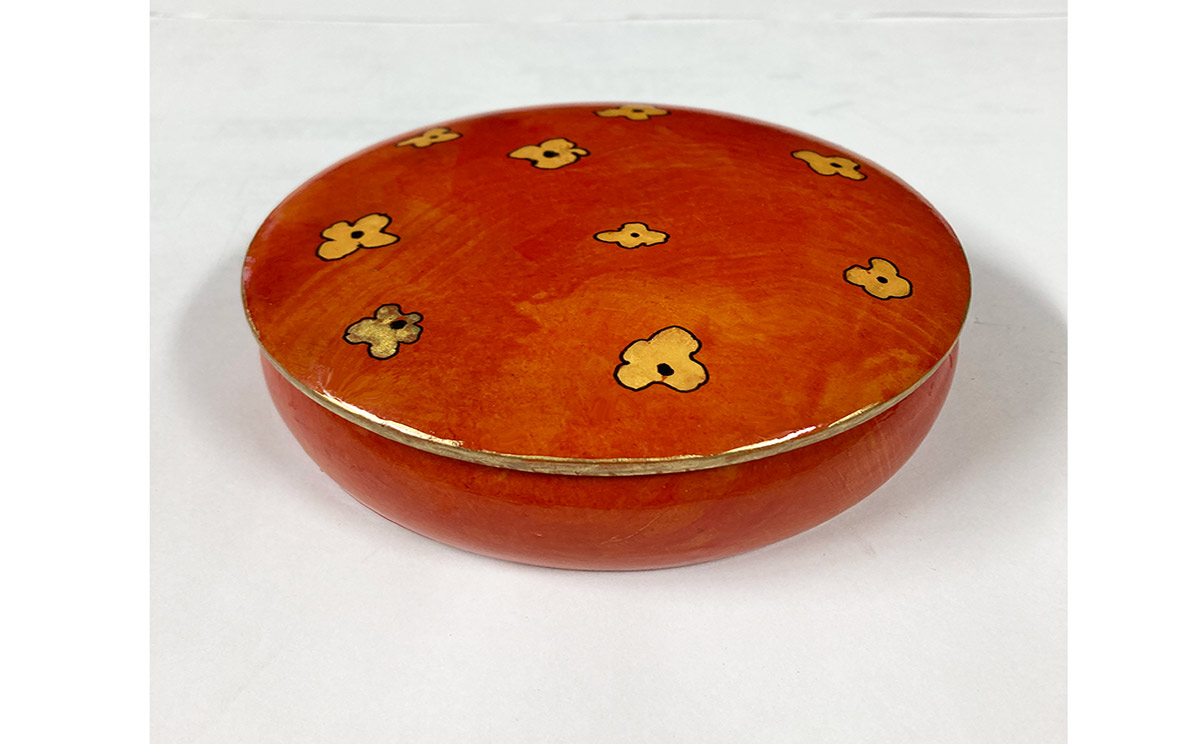
Glazing techniques are used to create facsimiles of Carnelian and Turquoise.

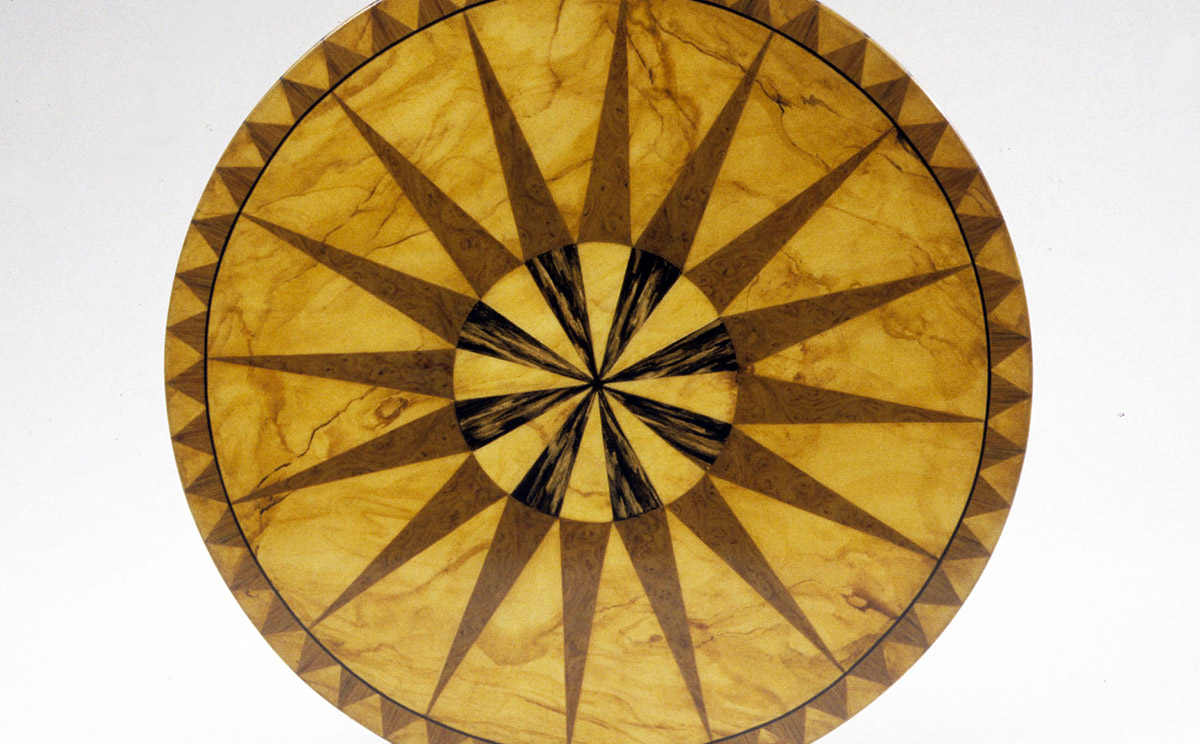
Curvilinear and geometric inlay designs will be rendered within all previously learned wood finishes. Additionally, zebrawood, kingwood, macassar ebony, rosewood, tulipwood, and crotch mahogany are taught. Prerequisite: Faux Bois.

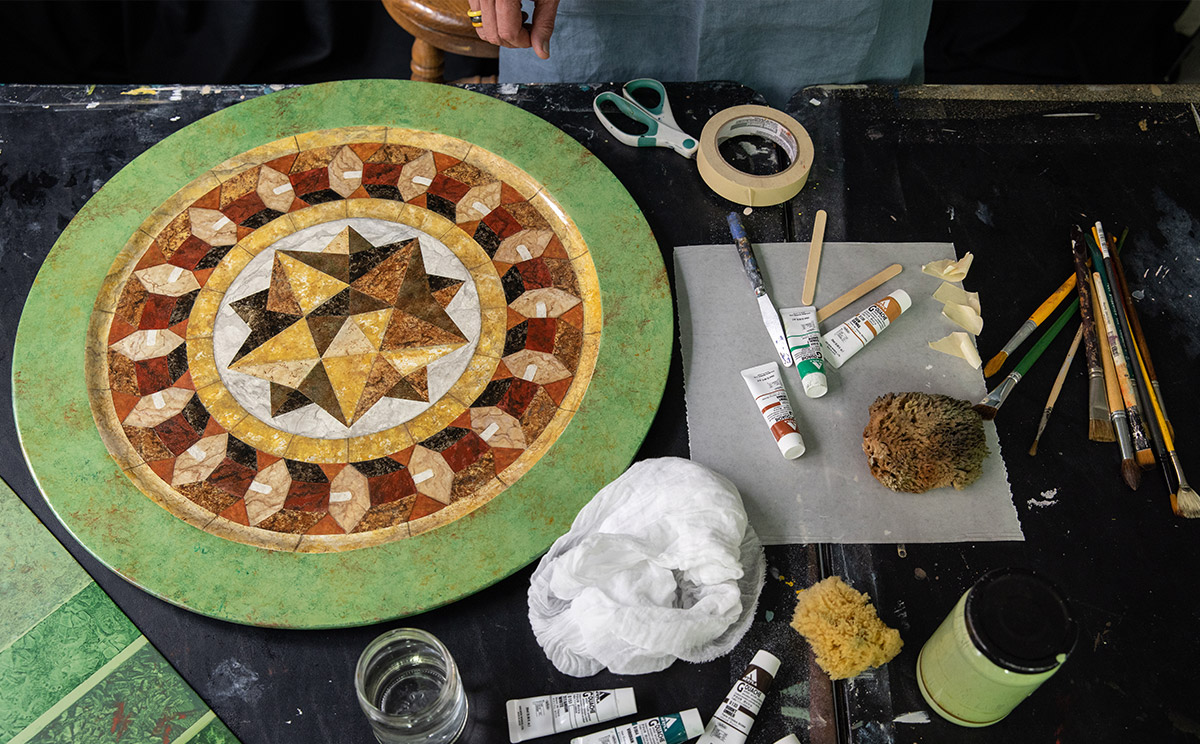
Students use water-based paints to create simulations of marble and minerals inlayed into intricate geometric patterns and designs. Instruction on granite and fossiliferous finishes will also be included.

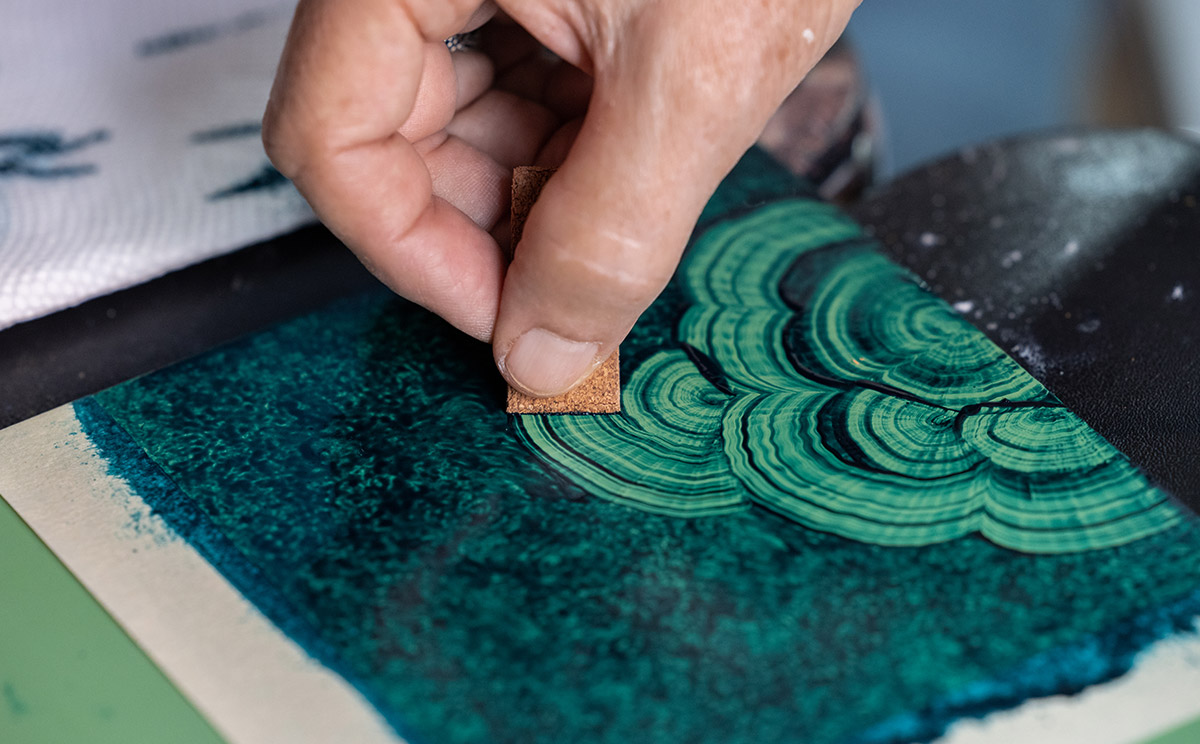
This class teaches how to render the detailed quality, depth, and color saturation of malachite gemstones. An additional fantasy interpretation of the mineral is rendered with glazing techniques.


This class teaches imitations of ribbon and plume satinwood, olivewood, straight grain walnut, walnut burl, and bird’s eye maple.


Students learn about the European interpretation of Asian designs gilded on black, red, and Coromandel faux lacquer backgrounds.

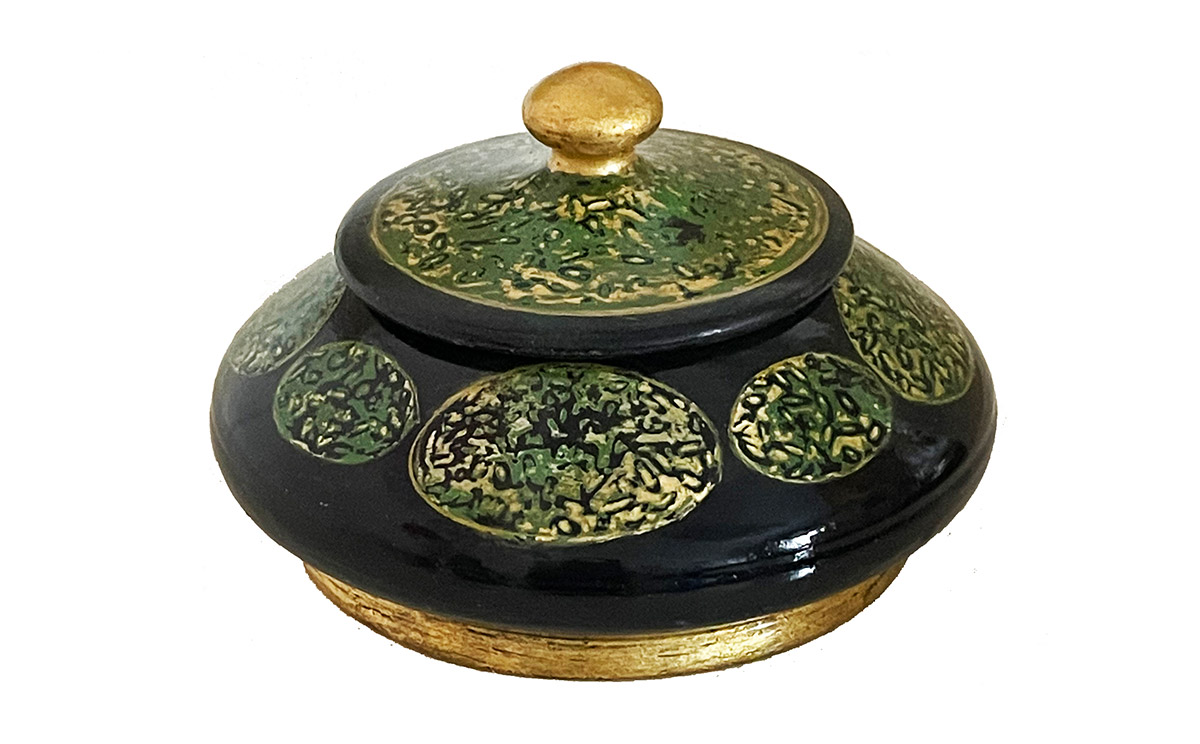
Students learn about the European adaptations of Asian techniques including Mokume, Nashi-ji, and Golden Grain lacquer.


Practiced for centuries, this is the ultimate traditional gilded finish. Students learn the techniques for preparing a surface with gesso and clay bole. Gold is then applied and burnished with polished agate tools to achieve a surface with a warm, rich glow.

(Occasionally Offered)
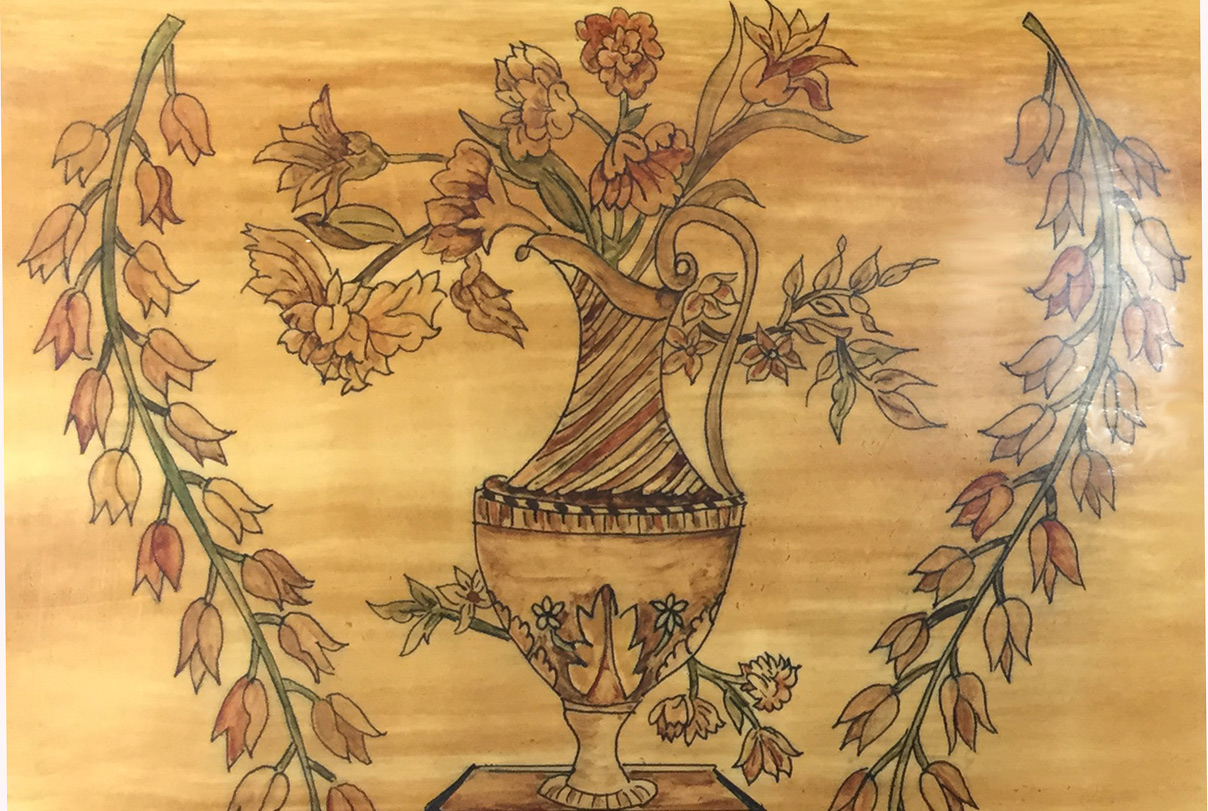
This class provides a different approach to Marquetry design by using Min-wax stains to delineate and shade the inlay.

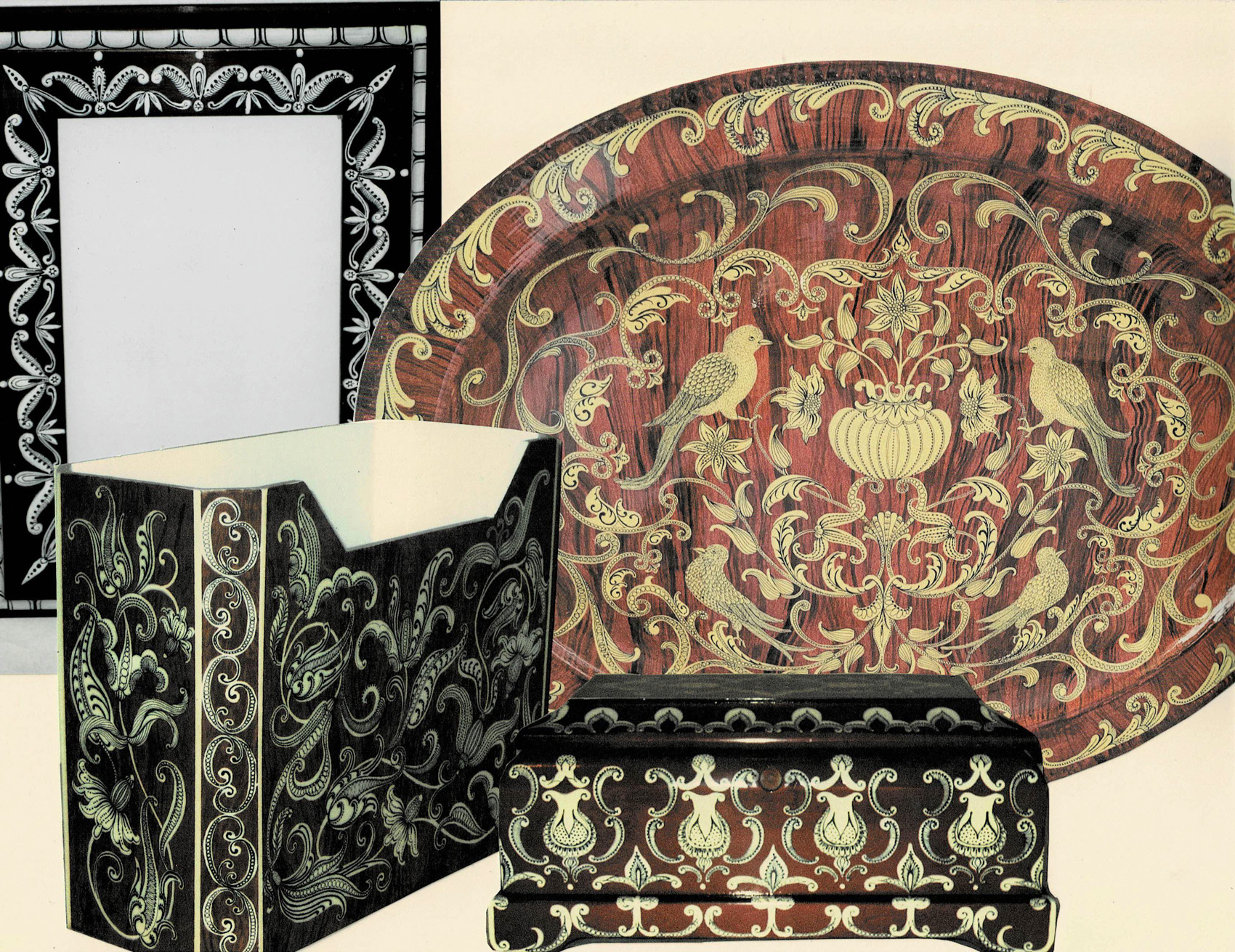
Come explore and recreate with paint and pen the historical method of inlaying intricately embellished ivory into a rosewood base.

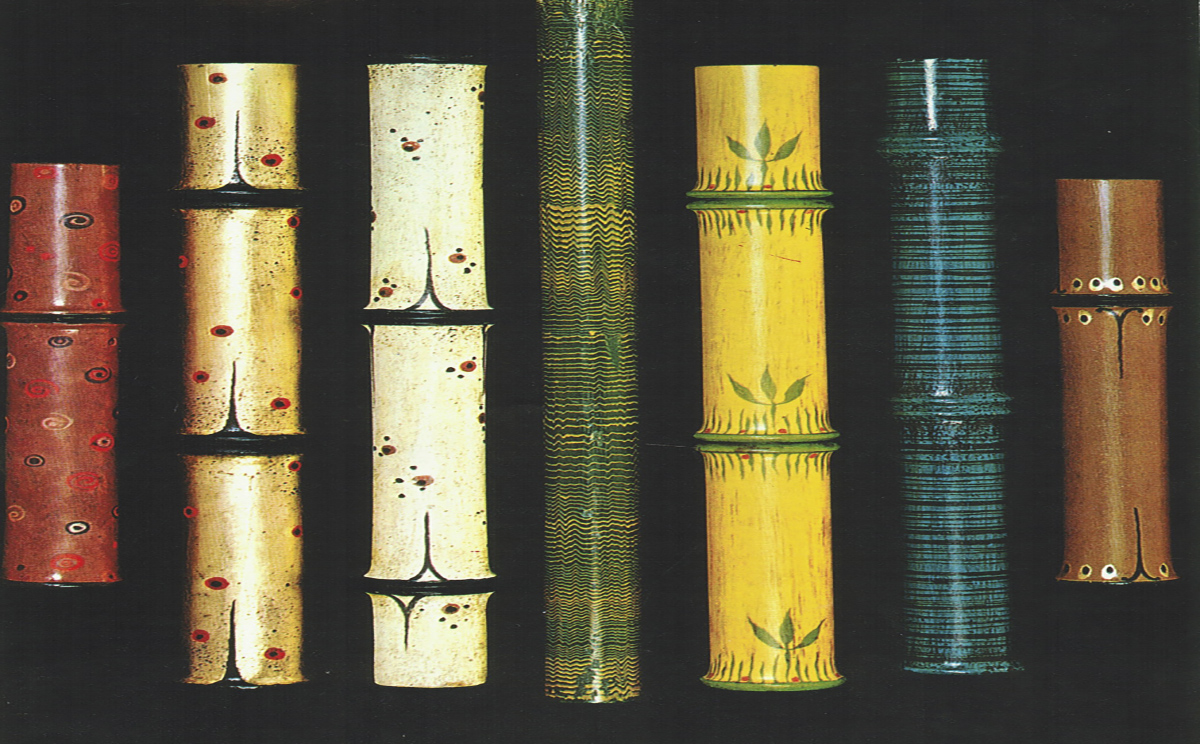
On picture frames, create several versions of Fantasy Bamboo – female, male and conceit.

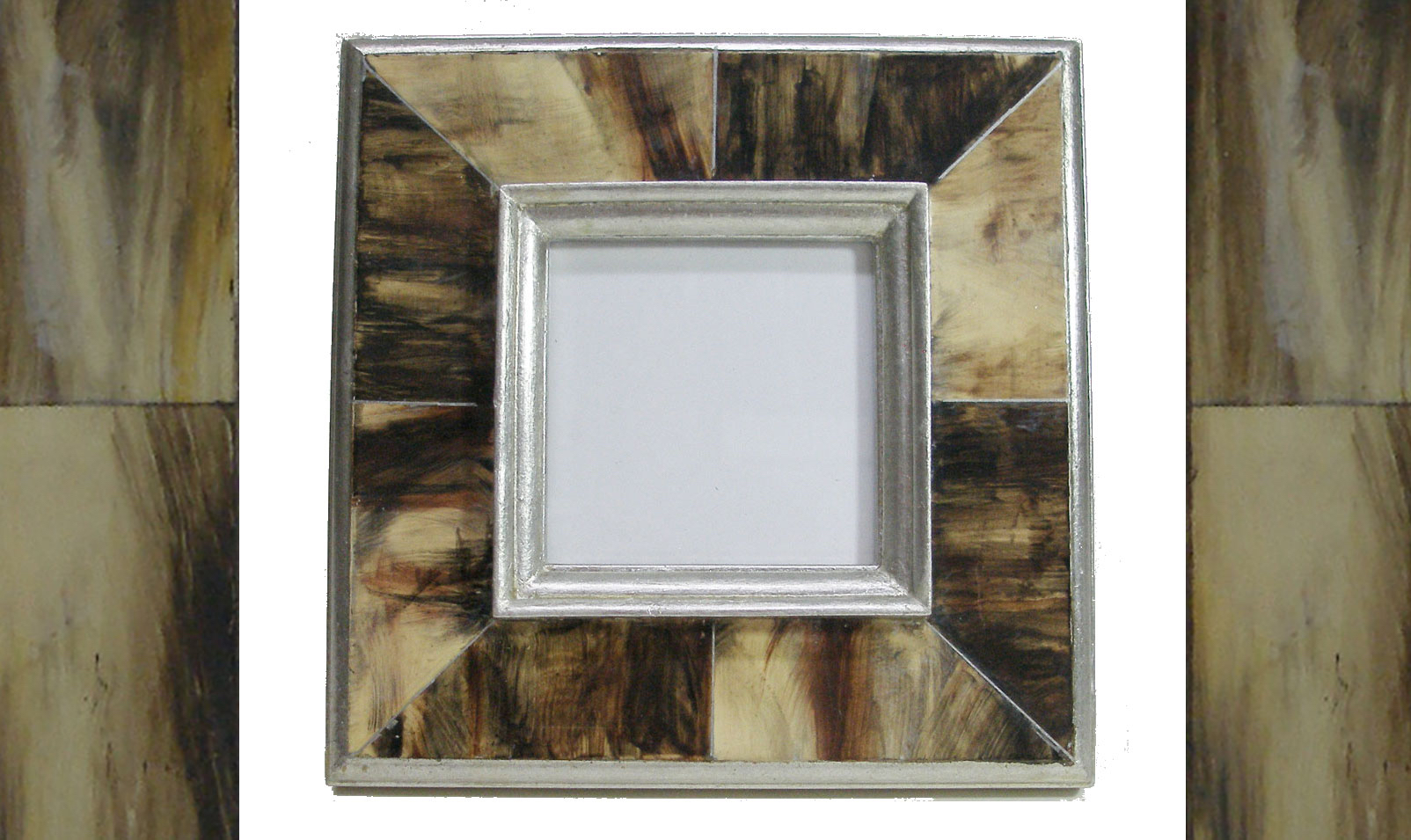
Fantasy horn will be created with glazes and powders. The paint will be manipulated with a whisk to emulate the horn markings.


Finish a piece or begin something new. This is a flexible course. Purchase five sessions which can be used throughout the ten session term. No need to attend consecutive weeks.

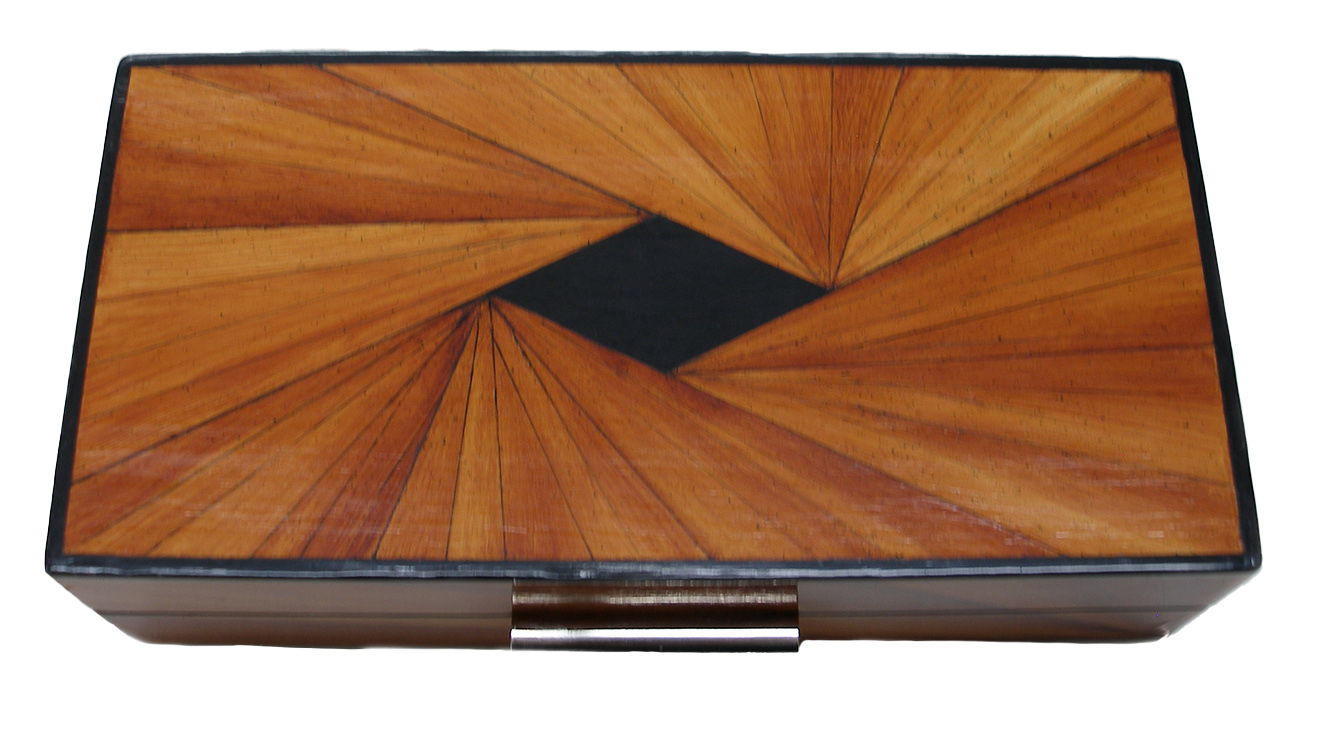
Following the style of Jean Michel Frank learn to imitate the complex technique of lining up straw! Diamonds and other geometric shapes are created to enrich a box, lamps or a tray.


Using water-based interference paints, students learn blending and application techniques that yield the subtle color shifts in Tiffany’s Favrile glass. Decorative floral motifs from this specific period of art glass are also developed.

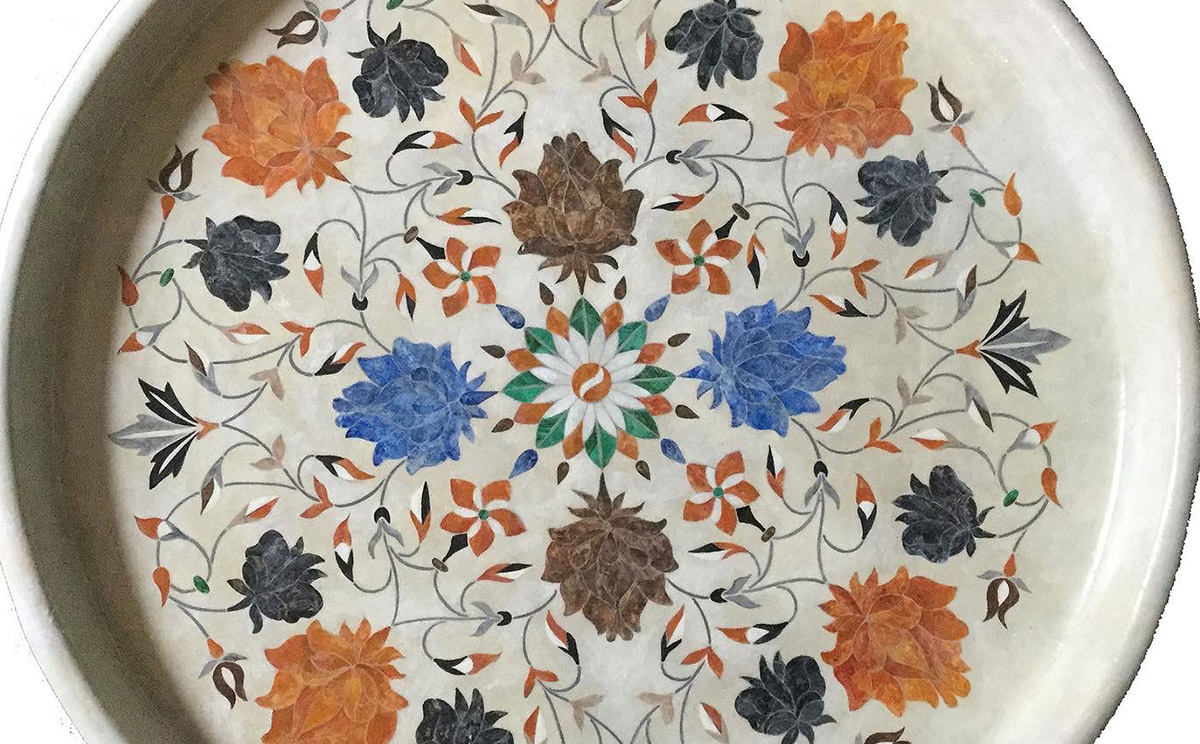
Prerequisite: Faux Minerals
The artisan is taught painting techniques to imitate “pictures in hardstone” that became popular in Florentine workshops of the Renaissance. The traditional inlay designs featured multiple-colored stones in complex floral designs or landscapes with patterned borders.

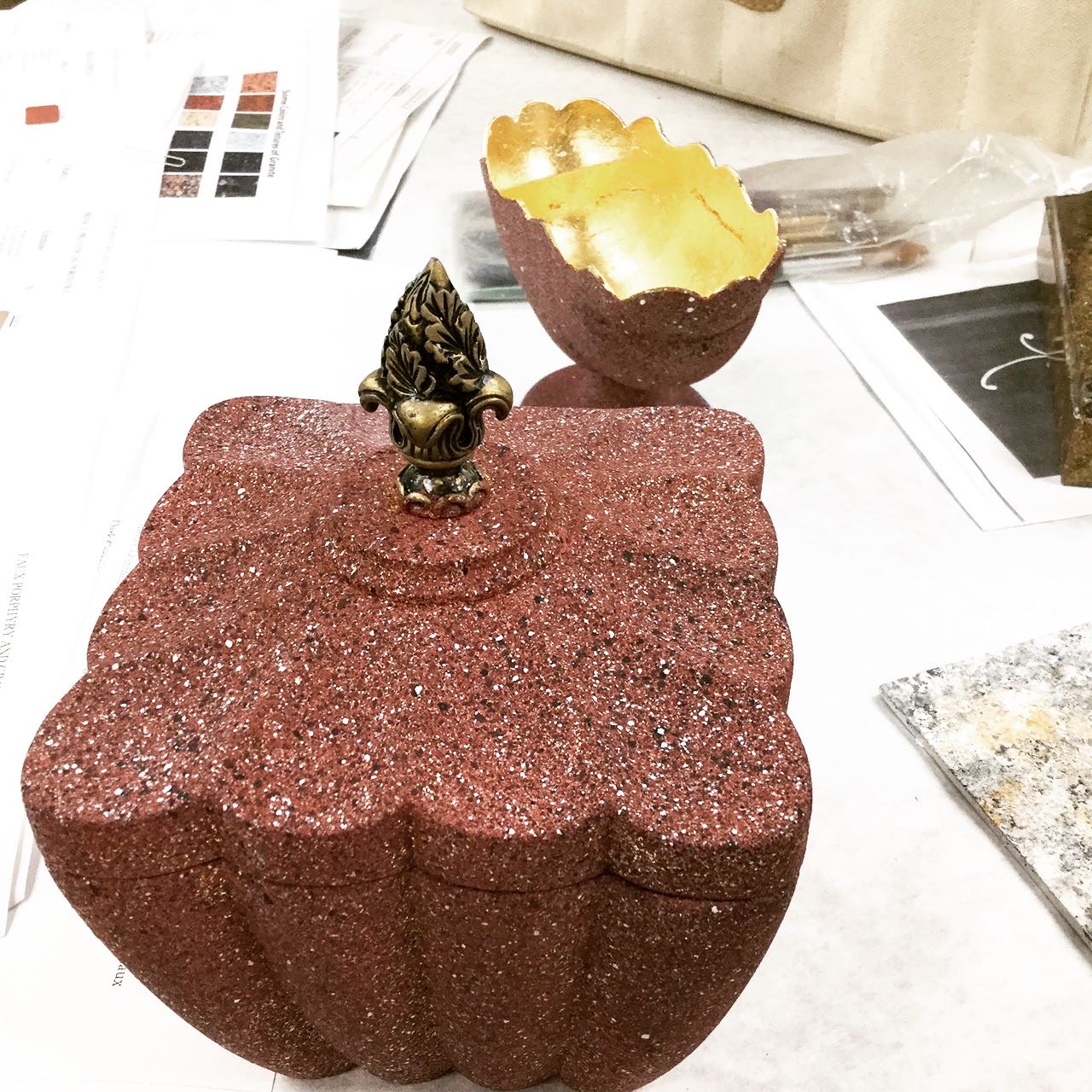
Use short, stiff bristle brushes to spatter various colors to create this igneous rock. A process that lets you enjoy your inner child!!

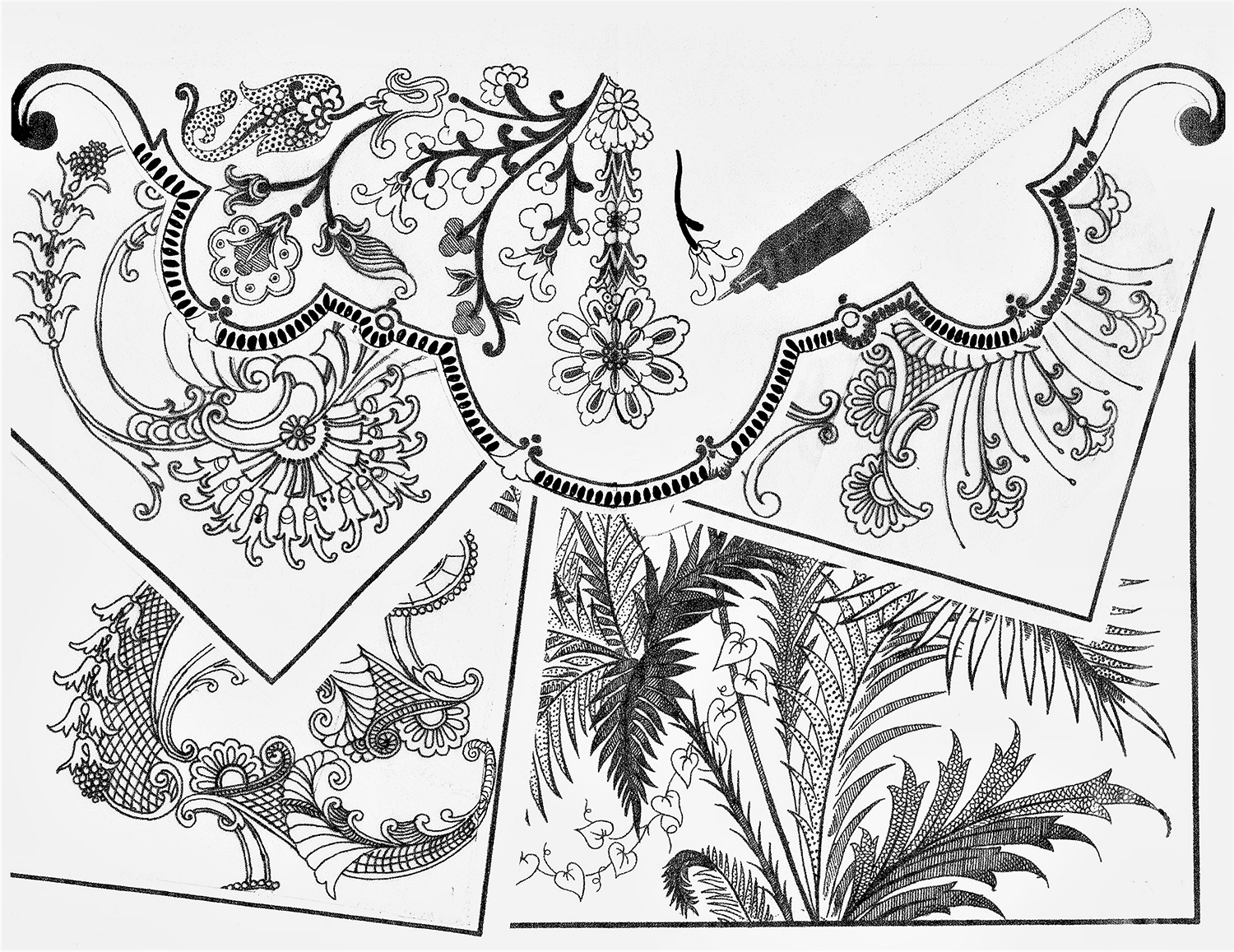
Students will acquire mastery in the manipulation of line to create designs. The proper maintenance and handling of a Rapidograph pen will be taught.

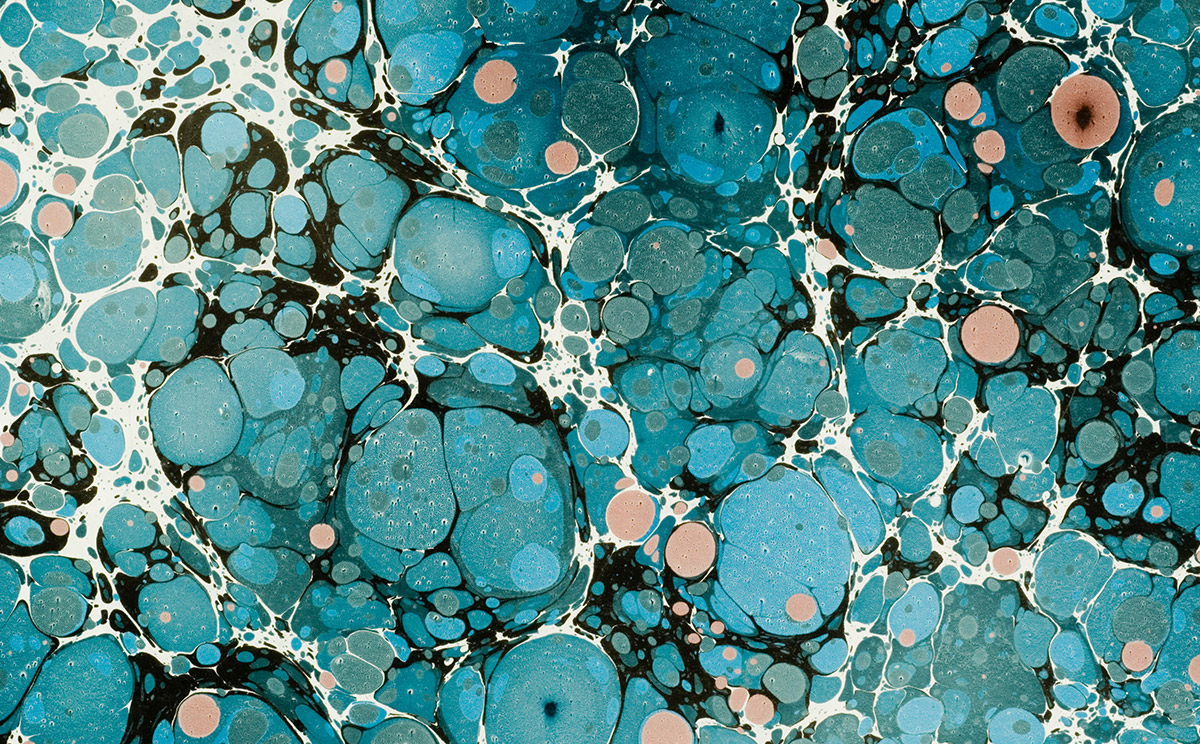
This captivating workshop is suitable for all. Participants learn the basics of creating colorful, decorative, and personalized papers for stationery, gift wraps, and other imaginative uses. This course rewards artistic experimentation.


Students are taught methods and materials for creating these very practical, personal, and decorative floor coverings. Students create their own painted floorcloth in water-based materials.


Using simple tools & materials, create a series of thin, parallel plates imitating baleen, the upper jaw of a whale. A segmented design will be executed on a flat, small piece

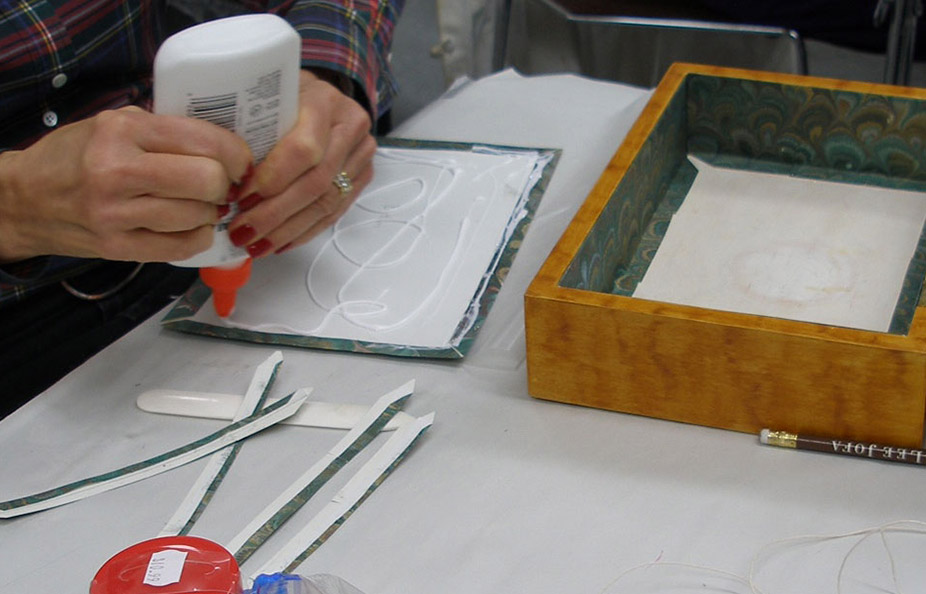
In this workshop learn to finish the interior of your box with an interesting paper. This technique also works for drawers.

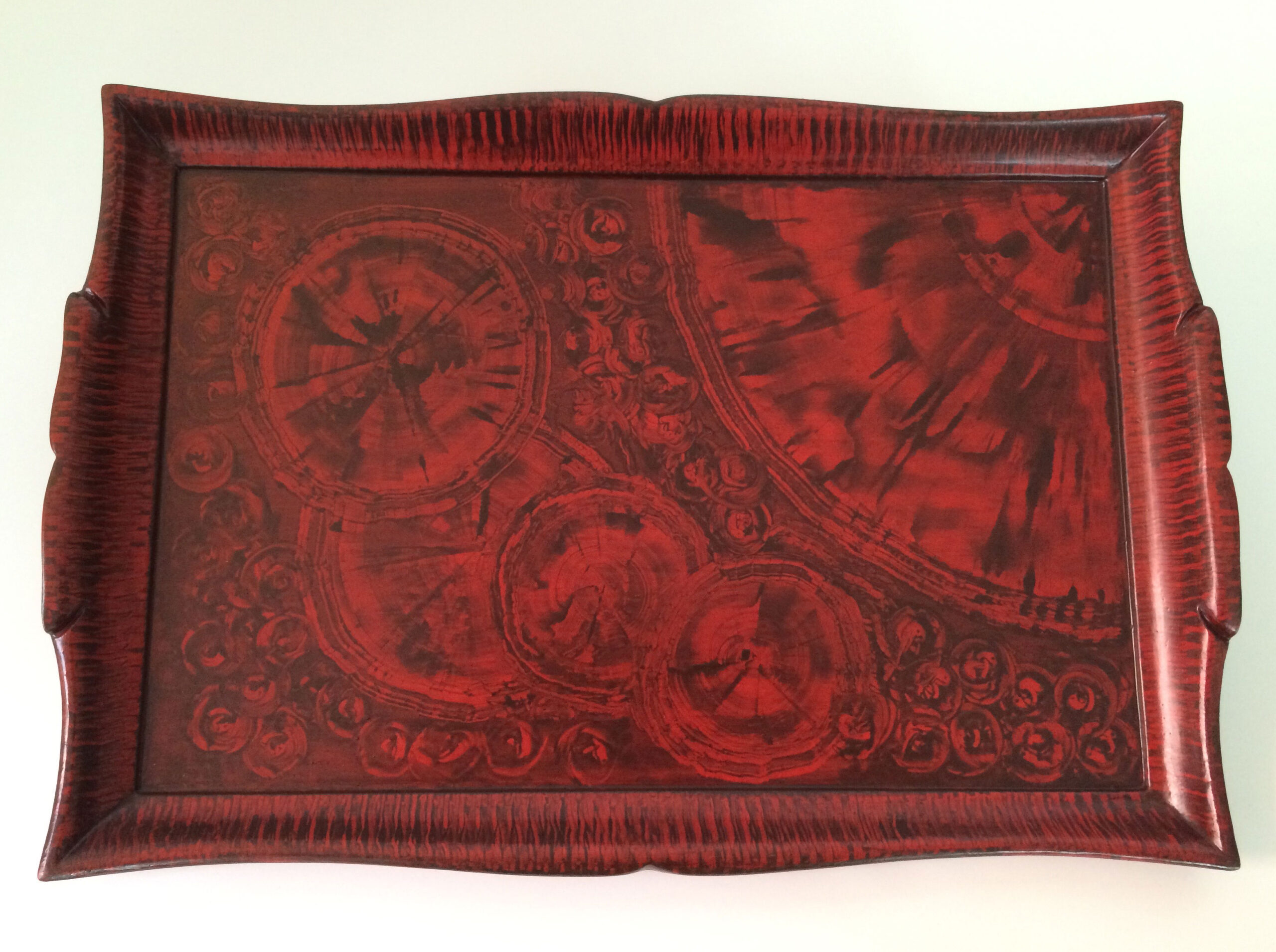
American Ring Cut, Vinegar Painting and Walnut Burl will be rendered in the manner of 18th Century artisans. At that time, the imitation of the actual wood was merely suggested and free-flowing. The resulting effects will be decorative rather than purely imitative.


A 3–hour period to work on class projects or additional pieces.
Paint room materials included.
Tuition: $25.00 per session
Purchase 4 sessions to be used throughout the 10–week term.

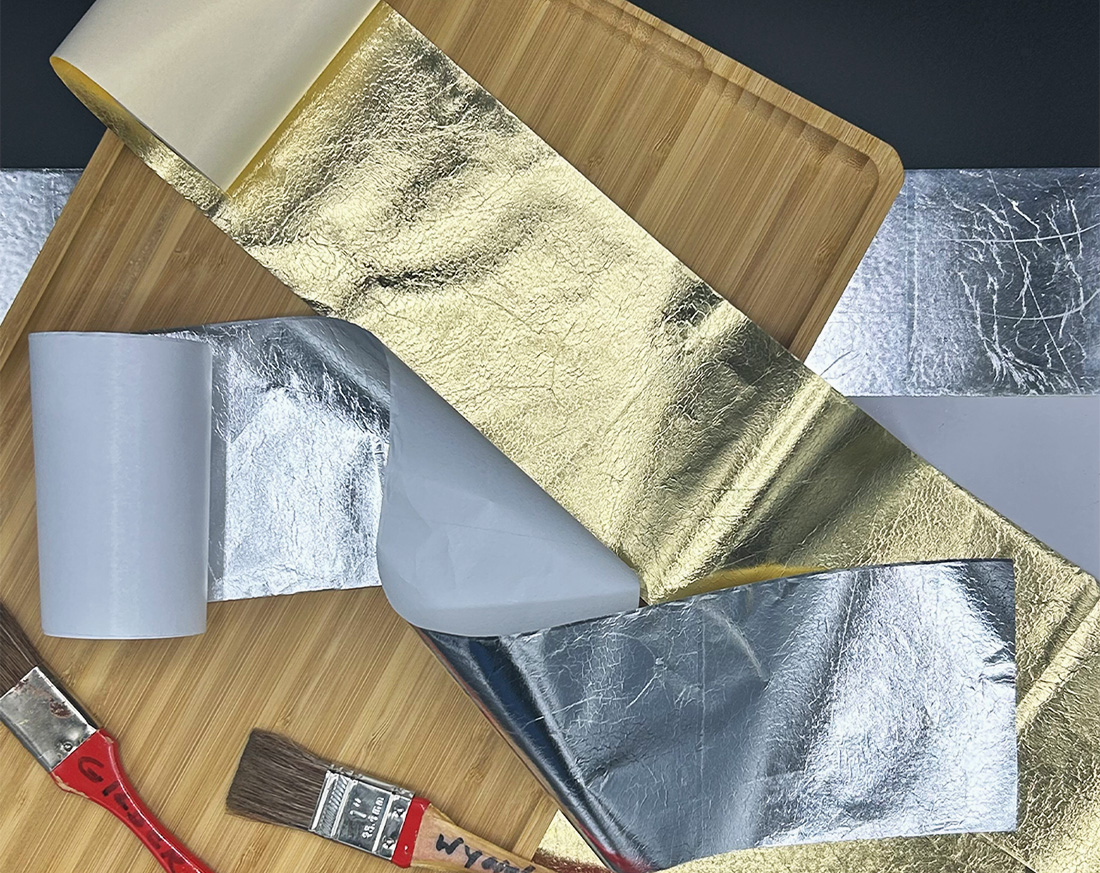
Learn to handle patent leaf! Dutch metal and aluminum will be gilded on a tray the first session. During the second session a simple decorative design will be overlayed in multicolored leaf flakes.


